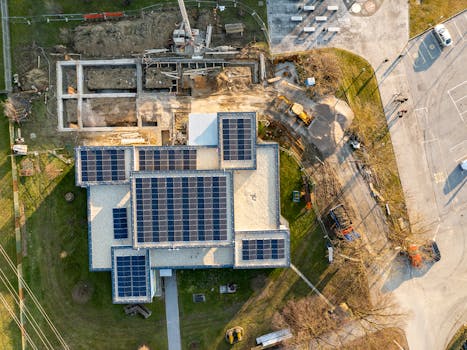
Sustainable Cities: How Europe is Shaping Eco-Friendly Lifestyles by 2025
Sustainable Cities are becoming increasingly important as the world grapples with the challenges of climate change, pollution, and resource depletion. Sustainable Cities are at the forefront of this movement, with many European cities taking the lead in creating eco-friendly lifestyles, investing in green infrastructure, and promoting renewable energy. In this article, we will explore how Europe is shaping sustainable cities and what this means for the future of our planet.
Introduction to Sustainable Cities
Sustainable cities are urban areas that are designed to minimize their impact on the environment, while also improving the quality of life for their citizens. This can include initiatives such as green buildings, renewable energy sources, and efficient transportation systems. The goal of sustainable cities is to create a healthy, prosperous, and environmentally conscious community that can thrive for generations to come.
European Cities Leading the Way
Many European cities are at the forefront of the sustainable cities movement. Cities such as Copenhagen, Stockholm, and Barcelona are investing heavily in green infrastructure, including parks, green roofs, and green spaces. These cities are also promoting renewable energy sources, such as wind and solar power, and are implementing efficient transportation systems, such as bike-sharing and electric buses.
Green Infrastructure
Green infrastructure is a critical component of sustainable cities. This includes parks, gardens, and green spaces that help to absorb carbon dioxide, reduce air pollution, and mitigate the urban heat island effect. Green infrastructure also provides habitats for wildlife, improves mental health, and enhances the overall quality of life for citizens. European cities are investing heavily in green infrastructure, with many cities aiming to increase their green space per capita.
Renewable Energy
Renewable energy is another key component of sustainable cities. Many European cities are investing in renewable energy sources, such as wind, solar, and hydro power. This not only reduces the city’s reliance on fossil fuels but also decreases air pollution and greenhouse gas emissions. Cities such as Copenhagen and Stockholm are aiming to be carbon neutral by 2025, with a focus on renewable energy and energy efficiency.
Transportation Systems
Efficient transportation systems are essential for sustainable cities. Many European cities are investing in bike-sharing schemes, electric buses, and other forms of sustainable transportation. This not only reduces air pollution but also decreases congestion and improves the overall quality of life for citizens. Cities such as Amsterdam and Berlin are leading the way in sustainable transportation, with a focus on pedestrian-friendly and bike-friendly infrastructure.
Conclusion
In conclusion, Europe is shaping the future of sustainable cities, with a focus on eco-friendly lifestyles, green infrastructure, and renewable energy. By investing in these initiatives, European cities are creating a healthier, more prosperous, and environmentally conscious community that can thrive for generations to come. As we look to the future, it is clear that sustainable cities will play a critical role in addressing the challenges of climate change, pollution, and resource depletion.






